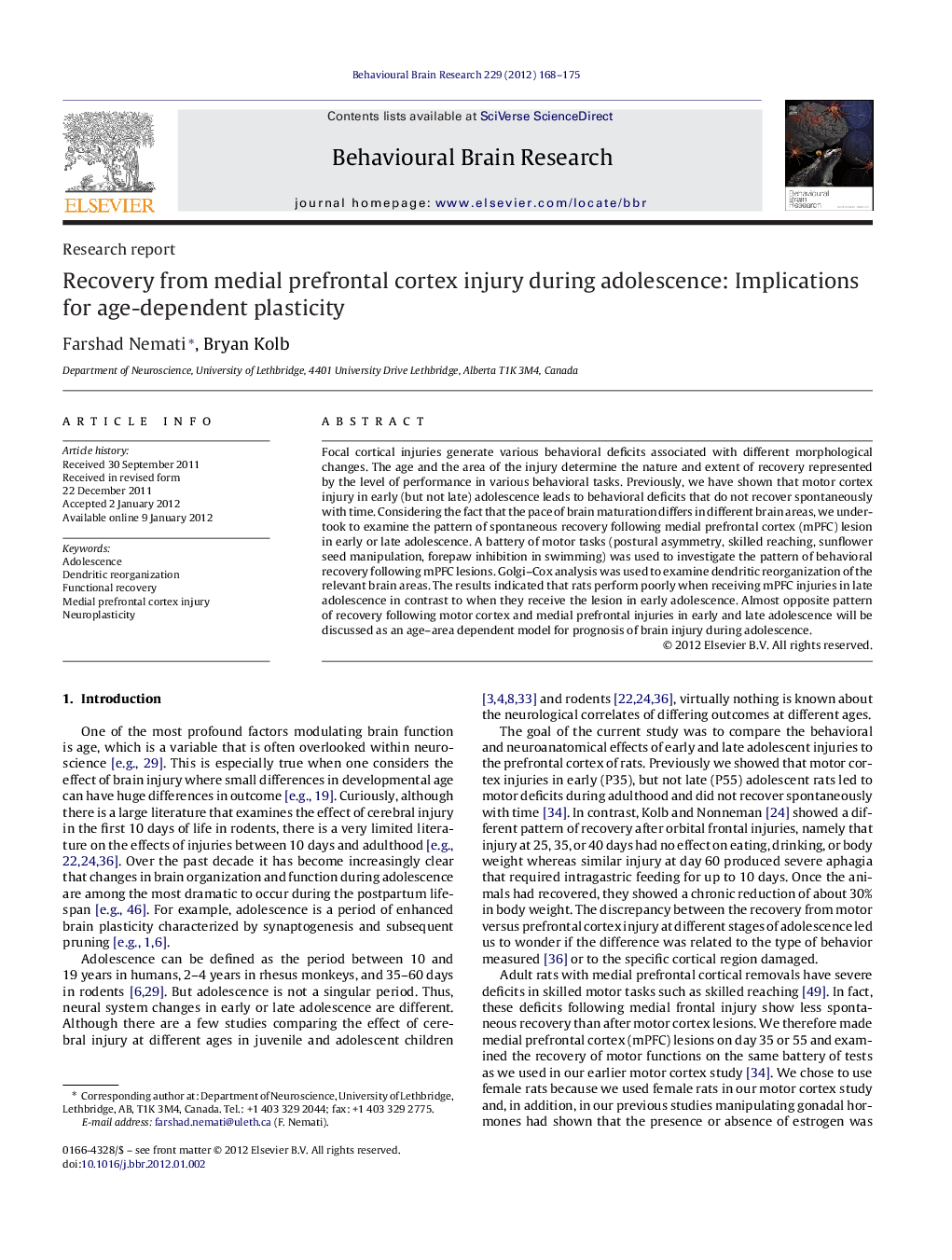| Article ID | Journal | Published Year | Pages | File Type |
|---|---|---|---|---|
| 4313358 | Behavioural Brain Research | 2012 | 8 Pages |
Focal cortical injuries generate various behavioral deficits associated with different morphological changes. The age and the area of the injury determine the nature and extent of recovery represented by the level of performance in various behavioral tasks. Previously, we have shown that motor cortex injury in early (but not late) adolescence leads to behavioral deficits that do not recover spontaneously with time. Considering the fact that the pace of brain maturation differs in different brain areas, we undertook to examine the pattern of spontaneous recovery following medial prefrontal cortex (mPFC) lesion in early or late adolescence. A battery of motor tasks (postural asymmetry, skilled reaching, sunflower seed manipulation, forepaw inhibition in swimming) was used to investigate the pattern of behavioral recovery following mPFC lesions. Golgi–Cox analysis was used to examine dendritic reorganization of the relevant brain areas. The results indicated that rats perform poorly when receiving mPFC injuries in late adolescence in contrast to when they receive the lesion in early adolescence. Almost opposite pattern of recovery following motor cortex and medial prefrontal injuries in early and late adolescence will be discussed as an age–area dependent model for prognosis of brain injury during adolescence.
► We examined recovery from mPFC injury in early and late adolescence in rats. ► Motor deficits were measured in adulthood following the injury in adolescence. ► Golgi–Cox analysis was used to examine dendritic changes in the brain. ► The results indicate a poor recovery from mPFC injury in late adolescence.
